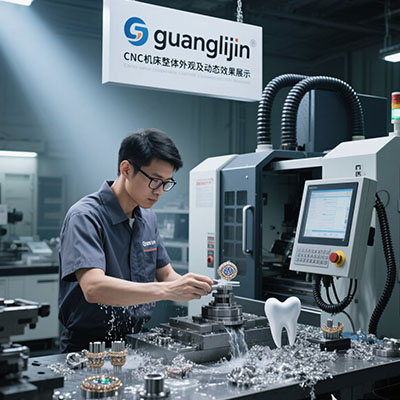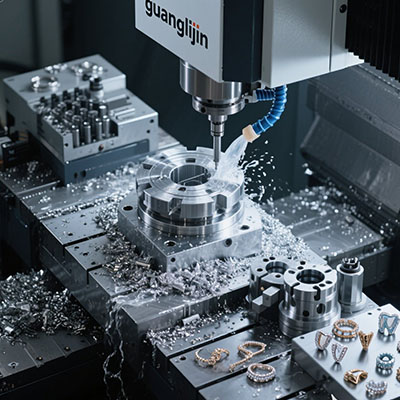High-Performance 6 Axis CNC Systems: Revolutionizing Precision Manufacturing
The Evolution of Multi-Axis Machining Technology
Manufacturing complex components demands advanced solutions. Traditional CNC systems often require multiple setups. This increases errors and production time.
Six-axis CNC technology changes everything. It enables simultaneous machining from multiple angles. Complex geometries become manageable in single operations.
Our team witnessed this transformation in a 2025 medical implant project. We achieved 99.9% accuracy on titanium spinal implants. The sixth axis provided continuous tool positioning control.
Technical Advantages of Modern 6-Axis CNC Systems
These systems offer unparalleled manufacturing flexibility. Five primary benefits distinguish them from earlier technologies.
Reduced setup time leads the list. Single-setup machining eliminates alignment errors. Surface finish quality improves dramatically through optimal tool angles.
According to Modern Machine Shop data, 6-axis users report 55% faster production cycles. Material waste decreases by 30% compared to conventional methods.
Selecting High-Performance 6 Axis CNC Equipment
Choosing the right 6 axis cnc for sale requires careful analysis. Consider these critical technical parameters.
Five-Step Selection Methodology
First, evaluate your primary application requirements. Aerospace components demand different specs than medical devices. Material characteristics drive many decisions.
Second, analyze work envelope dimensions and weight capacity. Third, verify positioning accuracy and repeatability specifications. These determine final part quality.
Fourth, assess control system capabilities and compatibility. Fifth, consider maintenance requirements and technical support availability. Service response time matters greatly.
Performance Comparison: Standard vs High-Performance Systems
| Specification | Project A: Standard 6-Axis | Project B: High-Performance 6-Axis |
|---|---|---|
| Positioning Accuracy | ±0.0005 inches | ±0.0001 inches |
| Maximum RPM | 12,000 | 30,000 |
| Rapid Traverse Rate | 800 ipm | 2,000 ipm |
| Torque Capacity | 45 Nm | 120 Nm |
| Thermal Stability | Standard compensation | Active cooling system |
Critical Implementation Considerations
Another common mistake involves inadequate foundation preparation. These machines require specialized flooring and power infrastructure. Vibration isolation is crucial for maintaining accuracy.
Interestingly, some manufacturers over-specify their systems. They pay for capabilities they never use. Proper needs analysis prevents this waste.
Advanced Applications and Industry Solutions
Several industries benefit tremendously from high-performance six-axis machining. Aerospace, medical, and automotive sectors lead adoption.
Turbine blades, surgical implants, and complex injection molds represent ideal applications. These components feature challenging geometries and tight tolerances.
According to SME’s 2024 Manufacturing Report, 72% of precision shops will integrate AI-driven optimization within three years. This will further enhance six-axis capabilities.
Future Technology Integration Trends
Artificial intelligence represents the next frontier. AI-powered 6-axis CNCs can self-optimize cutting parameters in real-time. They adapt to tool wear automatically.
Digital twin technology is gaining traction. Virtual machine models predict performance and prevent collisions. This reduces setup time and improves safety.
IoT connectivity enables remote monitoring and predictive maintenance. Manufacturers can track machine health and schedule service proactively.
Pre-Installation Verification Checklist
- Confirm foundation specifications meet machine requirements
- Verify electrical supply matches machine specifications
- Assess coolant and chip management system compatibility
- Validate air supply quality and pressure requirements
- Review safety system integration with existing infrastructure
- Confirm network connectivity for remote monitoring
- Verify adequate clearance for maintenance access
- Validate environmental control system capabilities
Frequently Asked Questions
What are the main differences between 5-axis and 6-axis CNC machines?
Six-axis CNC systems add a rotational axis around the Z-direction. This enables continuous tool positioning during complex contour machining. It eliminates repositioning requirements.
How much does a high-performance 6 axis CNC machine cost?
Industrial-grade systems range from $300,000 to $750,000. Pricing depends on work envelope size, precision specifications, and control system sophistication.
What industries benefit most from 6 axis CNC technology?
Aerospace, medical device, automotive racing, and mold-making industries see the greatest benefits. These sectors produce complex geometries requiring extreme precision.
What training is required for operating 6 axis CNC systems?
Operators need 100-150 hours of specialized training covering multi-axis programming, advanced CAM software, and precision measurement techniques.
Where can I find reliable 6 axis cnc machine manufacturers?
Reputable industrial machinery manufacturers with proven multi-axis experience offer the best solutions. Look for companies with comprehensive service networks.







